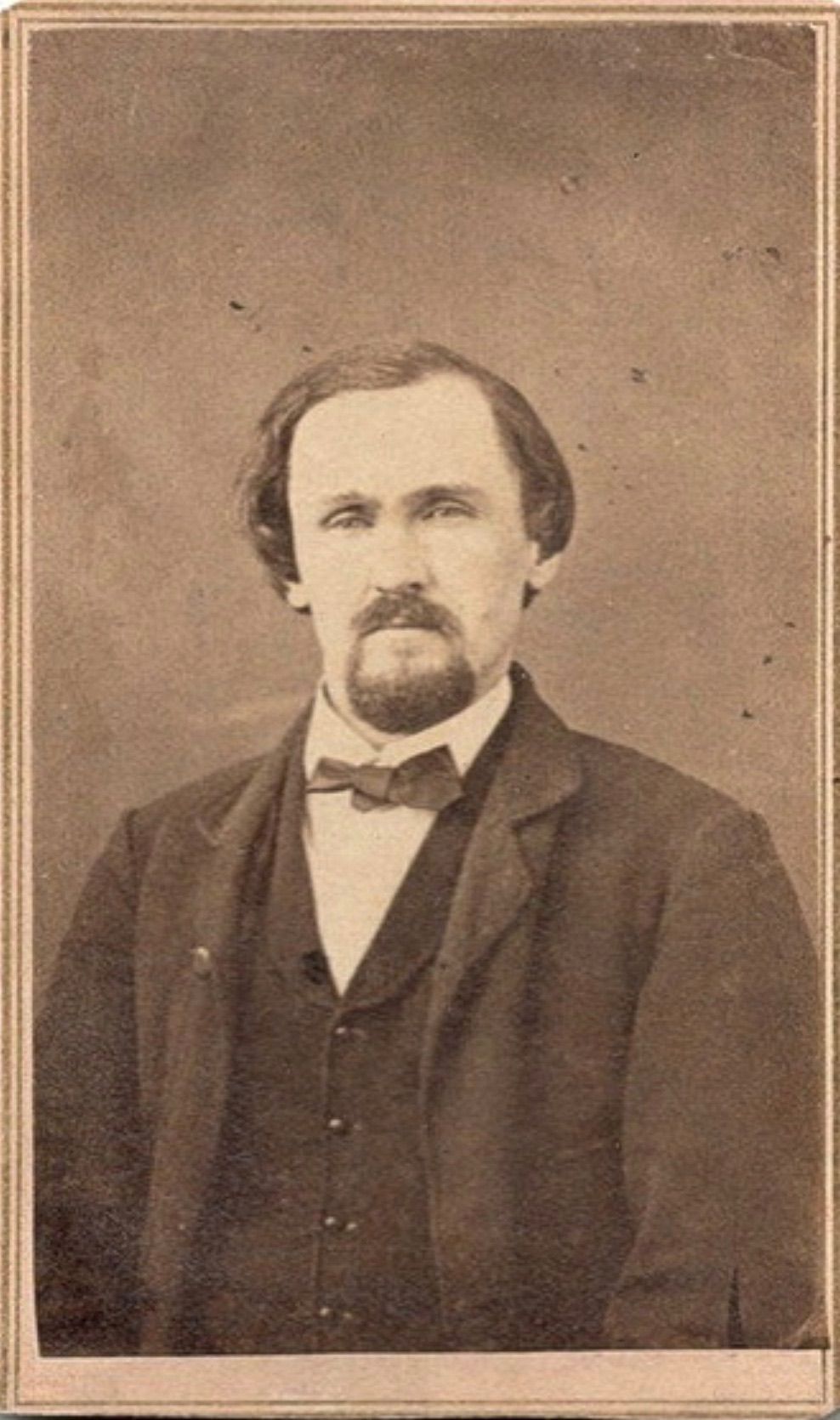John Yates Beall was born on his father's farm on January 1, 1835 in Charles Town, Jefferson County, West Virginia. He attended the University of Virginia to study law but upon the death of his father in 1855 he left his studies to take up farming.
At the start of the war, Beall joined Bott's Grays, Company G, in the 2nd Virginia Infantry. He received a wound in the lungs which left him incapable of active service.
Inspired by John Hunt Morgan, he conceived a plan to launch privateers on the Great Lakes. He presented his plan to Confederate authorities, who were interested but declined to act since it might endanger relations with neutral Britain. Beall was commissioned as acting master in the Confederate States Navy, though not given a command. He then proceeded on his own as a privateer, active in the areas of the Potomac River and Chesapeake Bay. He assembled a crew of 18 men and commanded two boats, The Raven and The Swan. His second in command was a 22-year-old Scotsman named Bennet G. Burley. Beall was captured by Union forces in November 1863 and jailed at Fort McHenry, in Baltimore, until he was released in a prisoner exchange on May 5, 1864.
Upon his release, he returned to the north shore of Lake Erie to Canada West, part of the Province of Canada, in order to implement a plan to free Confederate prisoners on Johnson's Island. On September 18, 1864, a small group of volunteers embarked from Sandwich and Amherstburg, Canada West, and, with Beall, captured the ship Philo Parsons off Kelleys Island, and then the Island Queen, which was scuttled. The plan included capturing the U.S. gunboat Michigan. However, at this point the crew refused to proceed further without outside assistance. Beall reluctantly agreed, and together they sailed back to Sandwich (the former name of and now a neighborhood of Windsor, Ontario), where they scuttled the Philo Parsons and separated, all escaping arrest except for Burley, whose extradition was demanded by U.S. authorities.
Beall then decided to free some captured Confederate officers by derailing a passenger train, but he and a companion, George S. Anderson, were arrested in Niagara, New York, on December 16, 1864. They were imprisoned at Fort Lafayette, New York. Anderson agreed to testify against Beall in return for leniency.
General John Adams Dix ordered a military commission for Beall's trial, which began on January 17, 1865. He was represented by James T. Brady. The arrest of Beall had not been published in any newspaper, and Confederate authorities were unaware of his status. On February 8, the commission found him guilty on all charges and sentenced him to death. Beall was then transported to and held at Fort Columbus on Governors Island in New York Harbor to await his execution.
The story of Beall's arrest and trial then appeared in the newspapers, and efforts were made to save him. Appeals were made to President Abraham Lincoln by many prominent people, including six U.S. Senators and 91 members of Congress, but Lincoln refused to intervene, not wanting to undermine Dix's authority. Beall was executed on February 24, 1865. He is now buried in the Zion Episcopal Churchyard, Charles Town, Jefferson County, West Virginia.
Source of information: en.wikipedia.org, www.findagrave.com

